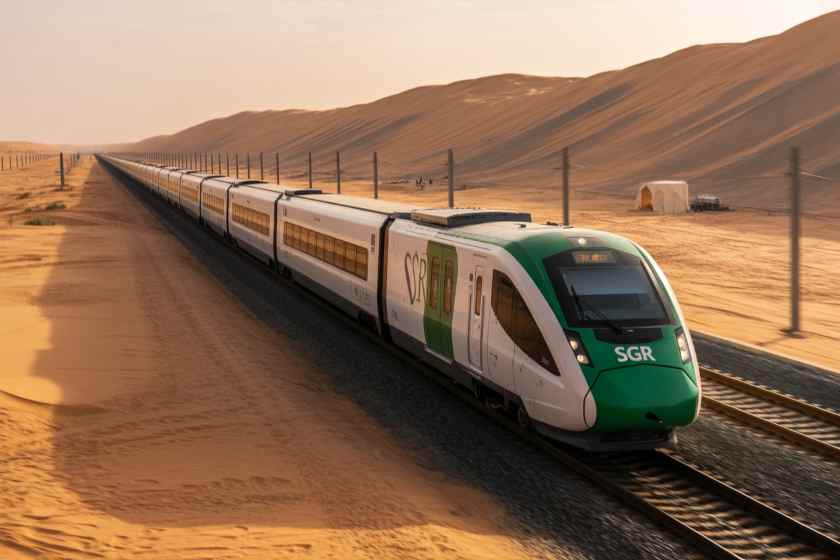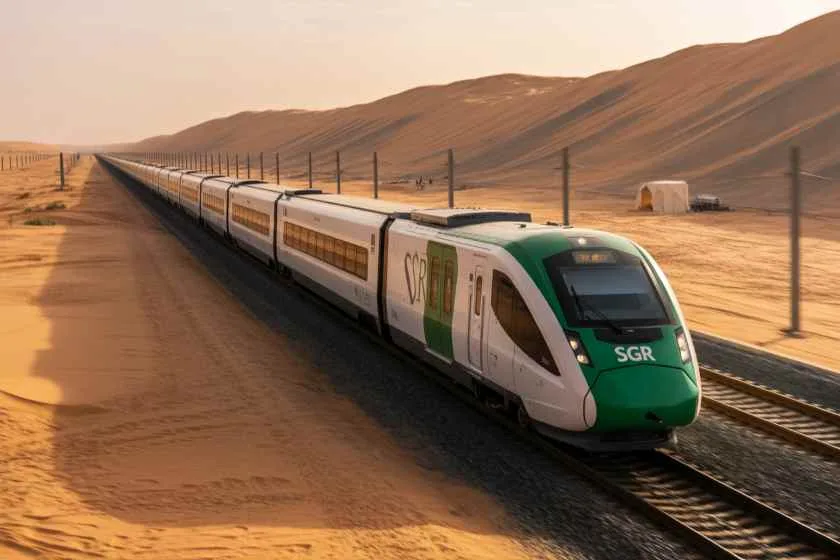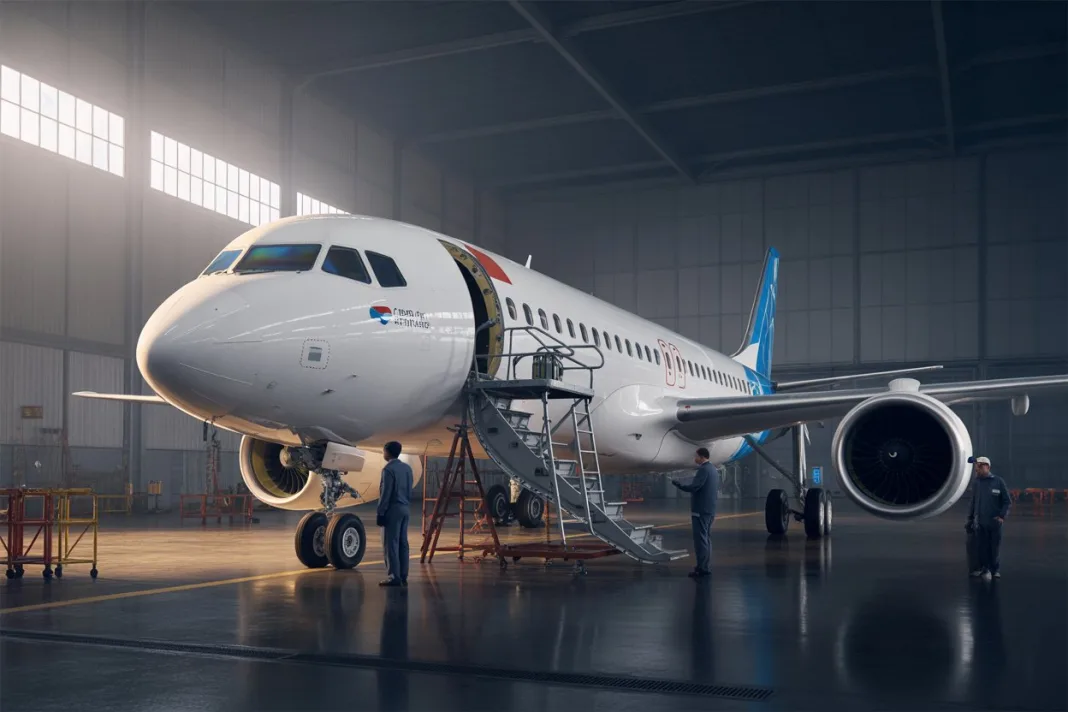Published on
August 10, 2025 |

Saudi Arabia Railways (SAR) has unveiled a procurement programme for 20 additional trainsets destined for the Haramain high-speed corridor linking Mecca and Medina. This initiative will augment the efficiency and payload of the 453-kilometre link, which underpins both devotional travel and general mobility between the two cities that dominate the Islamic world. The incoming rolling stock will upgrade the quality of the journey for the millions of pilgrims and tourists that arrive each year, thereby reinforcing the Kingdom’s stature as a regional nexus for high-speed rail travel.
Operational since 2018, the Haramain route has already compressed the Mecca-Madina journey time, accommodating the surging passenger volumes concentrated around the Hajj and Umrah periods. The latest order for 20 trainsets aligns with a national blueprint to deepen and contemporise transport frameworks, thereby scaling capacity for a burgeoning tourism sector. This expansion is a critical enabler as Saudi Arabia positions itself to receive a wider international traveller stream envisioned in the tourism component of the Vision 2030 roadmap.
Enhancing Travel Between Mecca and Medina
The Haramain high-speed rail line ranks among the Kingdom’s flagship transport projects, purpose-built to accommodate an expanding religious tourism sector alongside a growing general tourism market. By linking the two principal cities of Mecca and Medina, which are sanctified in the Islamic faith, the line provides pilgrims with a swift, comfortable travel alternative. Journey times shrink from five or six hours by road to a streamlined two and a half hours, thereby alleviating a critical bottleneck for the millions who arrive annually to perform pilgrimage rites.
The ongoing addition of twenty new trainsets will further lift peak-period capacity, a necessity when Hajj and Umrah demand swells. These contemporary, faster rolling stocks will not only expand seat availability but also elevate the quality of the passenger experience, harmonizing travel with the Kingdom’s strategic vision for tourism diversification and hospitality enhancement.
Supporting Saudi Arabia’s Vision 2030 Tourism Goals
Saudi Arabia’s Vision 2030 program prioritizes economic diversification through strategic investment in tourism, infrastructure, and cultural assets. Central to these aspirations, the Haramain high-speed rail network advances the kingdom’s commitment to modernising transportation, thereby facilitating easier access to the nation’s historical, cultural, and religious sites.
By developing its rail network, Saudi Arabia seeks to enhance the mobility of domestic and global tourists alike. The deployment of 20 additional trains along the Haramain corridor will accommodate both the expanding international tourism market and the annual surge of pilgrims. In tandem, Saudi Arabia Railways is exploring advanced connectivity solutions that link Mecca, Medina, and neighbouring regions, thereby granting wider access to the kingdom’s broadening tourism portfolio.
Bolstering Saudi Arabia’s Religious Tourism
The Haramain high-speed rail corridor is pivotal to the kingdom’s religious tourism infrastructure, serving the millions who journey to Mecca and Medina each year for Hajj and Umrah. The seamless movement of these pilgrims is essential, as successful transport logistics underpin the overall experience of Islamic travel in Saudi Arabia and exemplify the nation’s commitment to delivering world-class pilgrimage support.
The introduction of twenty additional rolling stock units will enhance capacity for pilgrim transportation, reducing dwell times and elevating onboard comfort. As the international number of million-plus annual Umrah travelers increases, the Haramain corridor is steadily evolving into a critical conduit that streamlines and humanizes the sacred journey.
Beyond religious travelers, the line supports a rising leisure tourism profile, interlinking Medina’s archaeological treasures, Mecca’s living heritage, and gateways such as Riyadh and Jeddah. Ongoing upgrades are thus informed by dual imperatives: servicing a diverse travel clientele and broadening the Kingdom’s tourism portfolio.
Economic and Ecological Dimensions of the Growth
The entry of twenty new units into the Haramain fleet is anticipated to yield multiple economic dividends. Doubling the fleet will lift capacity and overall ridership, thereby amplifying fare income and, by extension, the fiscal health of Saudi Railways and the tourism economy at large.
Moreover, the Haramain high-speed line supports Saudi Arabia’s sustainability objectives by curtailing road usage and lowering greenhouse gas emissions. As one of the most energy-efficient travel modes, rail transport reinforces the Kingdom’s commitment to environmentally responsible tourism and sustainable infrastructure. By providing a lower-carbon alternative to road and air transport, the line underpins a greener tourism sector in line with the nation’s Vision 2030 goals.
Saudi Arabia Railways envisions a series of progressive enhancements to the Haramain corridor, reflecting rising demand from the tourism sector. Planned initiatives encompass more frequent services, elevated levels of onboard luxury, and systematic extensions of the network to new tourism-dedicated destinations. Such upgrades will ensure the line continues to accommodate the expanding number of pilgrims and leisure travellers.
Integration with complementary modes of transport lengthening the reach of the railway to airports, metro networks, and regional bus services also forms a cornerstone of the development blueprint. Proposed new routes and expanded station facilities will safeguard the corridor’s capability to serve an increasingly diverse international audience, enabling seamless, multimodal travel across Saudi Arabia’s key cultural and religious attractions.
Conclusion
The extension of the Haramain high-speed rail corridor, coupled with the addition of twenty new train sets, positions the Kingdom of Saudi Arabia to reinforce its stature within the burgeoning global tourism economy. Upgrades to this vital mobility network will serve as a catalyst for both pilgrimage and broader leisure travel, streamlining access for international travellers to the Kingdom’s diverse cultural landmarks, extraordinary natural environments, and revered sacred sites.







